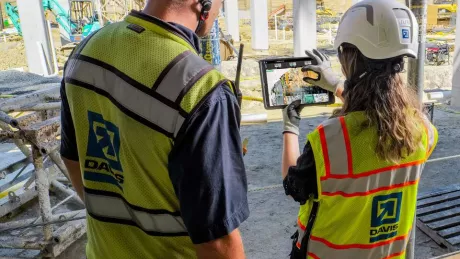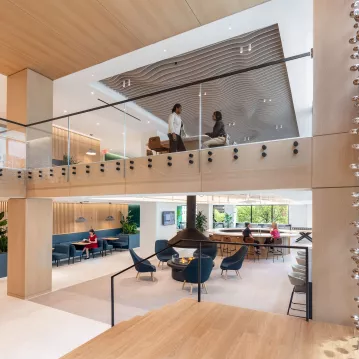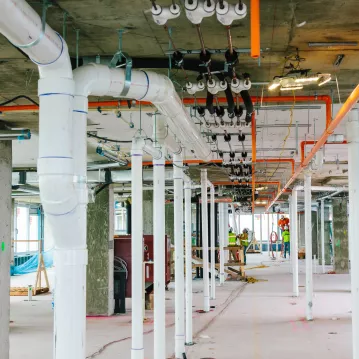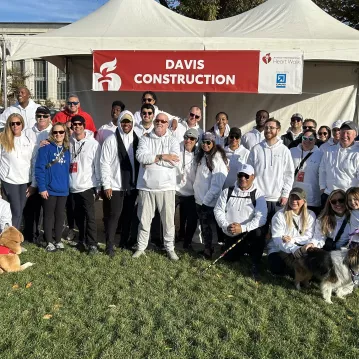The Age-Old Problem of Bringing Youth Into the Construction Industry

With each passing year, the ever-growing gulf between labor demands and labor availability in construction continues to expand. In their most recent report, the Associated Builders and Contractors (ABC) predicts that in 2024, the construction industry must hire an additional 501,000 workers, atop their normal hiring practices to meet current labor demands. With the median age of construction managers nearing retirement at age 45.2 and industry growth reaching an estimated and staggering $16.1 trillion globally by 2030, labor shortage woes are seemingly here to stay.
Although we may understand the extent of the problem, the fix is a little more complicated. The best explanation of this disparity is twofold; construction’s unshakeable stigmas and the industry’s inability to engage the next generation of working professionals.
Breaking the construction stereotypes
The stigmas surrounding construction are as damaging as they are ubiquitous. Any trip past an active jobsite or quick Google search will conjure up images of construction being little more than a dirty, time-consuming, sweat-inducing, old-school and dangerous profession. Whether it is high-rise or highway construction, residential or commercial markets, plumbers or electricians, all paths seem to be fraught with callous-handed difficulty. And if this is the perception, then it’s no wonder that younger professionals are looking elsewhere for gainful employment. Given the option between working with steel and working with code, working from the jobsite and working from home, or making a living and making money, the latter just seems more appealing.
What’s not immediately obvious, however, is that traditional industries and emerging industries aren’t necessarily mutually exclusive. In fact, when compared to alternative, more digitized industries, construction offers on par or better opportunities, more disruptive innovation and a brighter professional outlook. These possibilities make construction a great first-choice career decision for recent graduates, instead of the traditionally perceived “back-up plan” when all else fails.
Looking to the future
Wherever people live, there will be construction jobs available. As populations change, new leaders are elected and economic needs evolve, there will always be demand for construction. As humans migrate from state-to-state or country-to-country (and in the future, planet-to-planet), there will be a need for new or revitalized infrastructure to support life. This reality was put on full display during the COVID-19 outbreak when droves of people vacated urban centers for rural economies — creating a flurry of new construction, revitalization initiatives and renovation/repurposing projects in small- and mid-market towns. Not only that, but as contemporary life evolves, construction follows suit. Moreso today than ever before, there has arisen an increased dependence on sustainable living practices, teleworking and digital commerce, causing an unprecedented growth in construction for data centers, EV manufacturers, battery plants and microchip factories.
As always, the industry needs skilled workers to thoughtfully design and physically build these emerging spaces, but less discussed is the need for professionals that specialize in operations, finance, accounting, marketing and business development. Undiscussed, and maybe unknown to the wider world, there is a large and growing need in construction for technologists, hardware and software developers, researchers and innovators, virtual construction managers, data scientists, robot operators, 3D printers and drone pilots. The diversity, complexity and innovation of today’s construction projects are matched only by the diverse, complex and innovative characteristics of today’s construction jobs.
The success of the industry relies upon the success of today’s students and young professionals. It is imperative the next generation look at the construction industry as a place to build; not just skyscrapers and roads, but new methodologies, new automations, new programs, new robots and new futures. This is where construction is headed, but it needs the expertise and guidance of those who can evaluate an impossibly difficult puzzle and propose complex, outside-the-box and innovative solutions.
Engaging with the construction professionals of tomorrow
DAVIS Construction has recognized that solving tomorrow’s construction challenges means first engaging with today’s most creative, most unencumbered thinkers. Being geographically near multiple prestigious universities, DAVIS has been able to provide an environment for homegrown student innovators looking to uncover unprecedented efficiencies in construction. Through our collaboration with George Mason University’s newly-minted Mason Autonomy & Robotics Center (MARC) or operating under the National Science Foundation’s (NSF) Industry-University Cooperative Research Center Programs with Virginia Tech’s Myers-Lawson School of Construction, DAVIS has found new solutions for aging construction challenges. Peggy Jones, a retired principal at DAVIS, says the collaboration at the MARC is critical. “The MARC connects academics, research, and experimentation between students, professors and local businesses.”
Ruichuan Zhang, Ph.D., is an assistant professor at the Myers-Lawson School and agrees on the critical need for connection with college students. "University academia plays a crucial role in addressing the construction industry's labor shortage by equipping students with the engineering and management skills necessary for modern construction practices,” he says.
It is our hope that through academic partnerships, not only can we find new solutions for inefficiency and waste, but more importantly, engage with the younger generation, demonstrating that construction is an exciting, innovative and viable industry worthy of exploration.
DAVIS’ nationally ranked internship program immerses students in the construction industry and prepares them for the professional world. Visit the Internships page to learn more.





